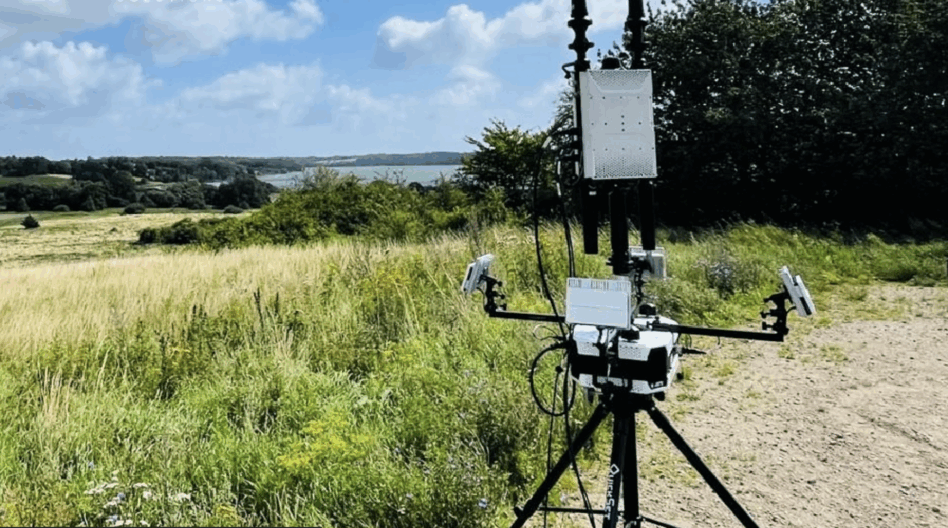Frying them with microwaves, shooting them down, jamming them—c-UAS companies have a growing and creative array of ways to take down drones.
But Israeli-American drone-takeover company D-Fend has a novel solution: commandeering them. And in an exclusive release with Tectonic this morning, they rolled out their newest option: EnforceAir PLUS, an amped-up version of the company’s RF-powered drone “takeover” software.
We’re taking over: Here’s how it all works: D-Fend’s RF-cyber “takeover” tech detects small drones via their radio signals, “hacks” them, and lands them instead of jamming or kinetic downing. Their products are used by a few unnamed military and law enforcement agencies, on top of commercial customers like airports and public venues.
D-Fend’s existing lineup includes:
- EnforceAir, D-Fend’s OG product, which identifies, locates, and commandeers rogue drones.
- EnforceAir 2 builds on the first version, but with a more compact package that has better Size, Weight, and Power (SWaP), portability, and performance.
- EnforceAir UX, the user interface and airspace-management tablet software for EnforceAir and EnforceAir 2.
And here’s what D-Fend says their latest PLUS offering brings to the table:
- RF-cyber detection and takeover software that’s “adaptable to frequencies that may be encountered in the field.”
- Adds optional radar detection using platforms from other providers, like Echodyne, to extend coverage and improve performance.
- A new AI-integrated SmartAir target fusion engine that “merges cyber and radar data” to identify and track drones.
- Optional RF jamming, which adds to an existing c-UAS defensive layer.
“Unlike purely jamming or kinetic solutions, cyber takeover enables the operator to define and execute the drone’s behavior upon mitigation,” the company’s president and chief product officer, Yaniv Benbenisti, told Tectonic. “This approach ensures continuity of airspace operations, protects bystanders, and minimizes disruption,” which is useful for places where drones falling out of the sky is, well, less than ideal.
Layers on layers: If you’ve been watching the drone space, the threat of swarming is keeping a lot of people up at night. While D-Fend can handle multiple drones at once, it’s not totally clear how much their takeover tech can adapt to large swarms, especially with cyber-hardened or unfamiliar systems. Nevertheless, the company argues that EnforceAir PLUS adds a cyber layer to existing drone defense stacks.
“As proven by the latest Operation Spiders Web attack in the Russia-Ukraine war, traditional c-UAS technologies which rely only on long-range radars and jamming, kinetic, and spoofing mitigation are vulnerable to small commercial and FPV drones,” Benbenisti said. “EnforceAir PLUS bridges the limitations of multi-layer c-UAS systems [that] are not based on cyber technology.”
D-Fend says the new tech has already been tested and is ready for “immediate deployment.” Benbenisti said they’re “seeing strong interest from top-tier government entities and leading security organizations worldwide.”
But as drones pumped out by adversaries grow more sophisticated, militarized, and stealthy, the big question is whether D-Fend’s takeover tech for small drones can keep pace. Given the government’s interest in a layered defense, it never hurts to have options.

